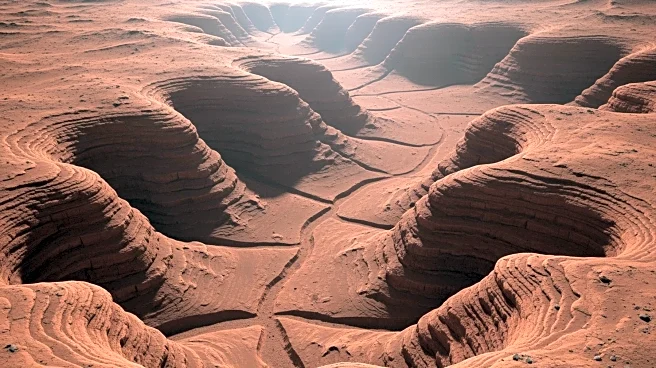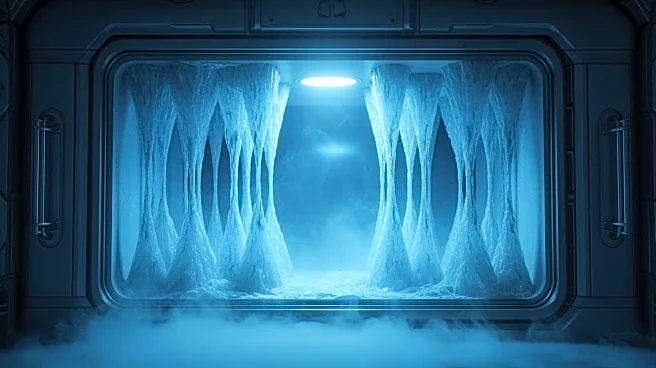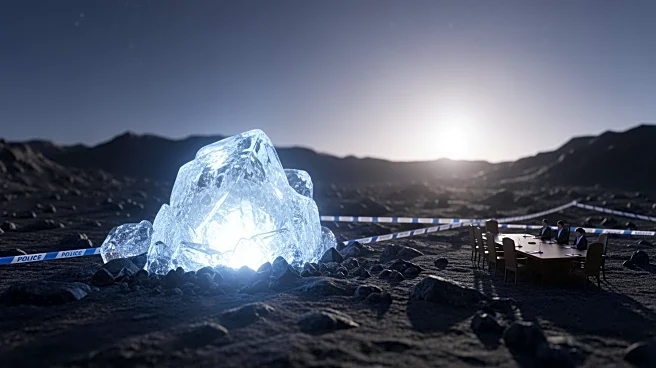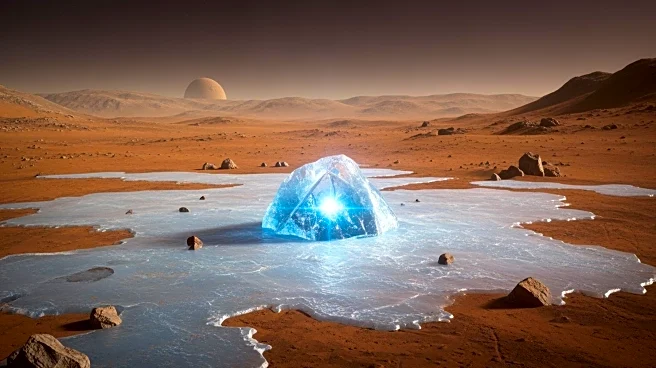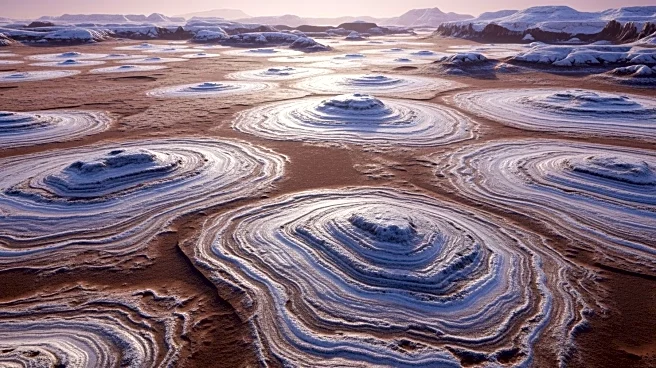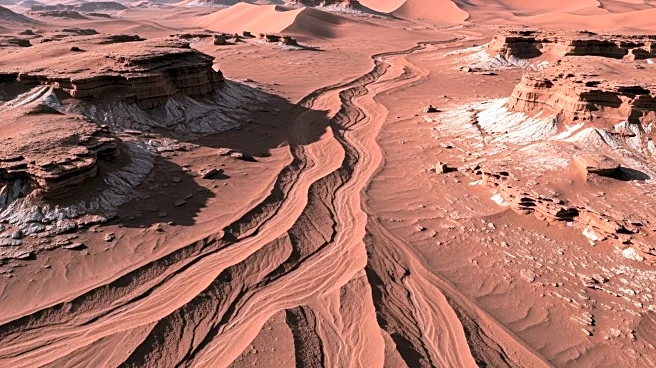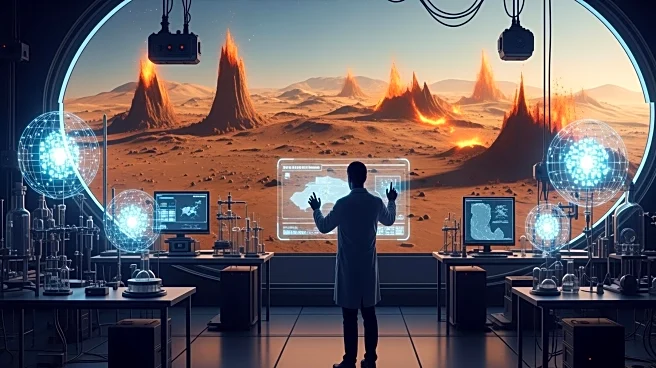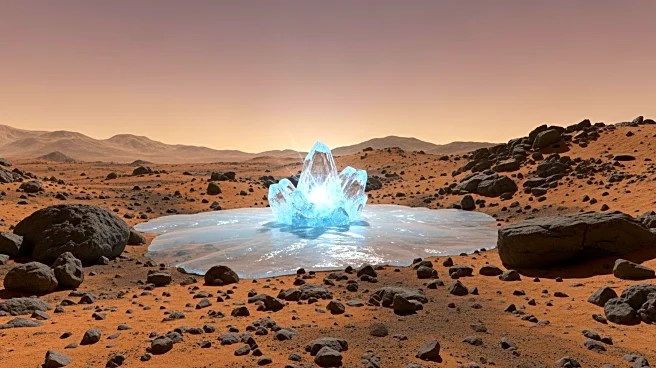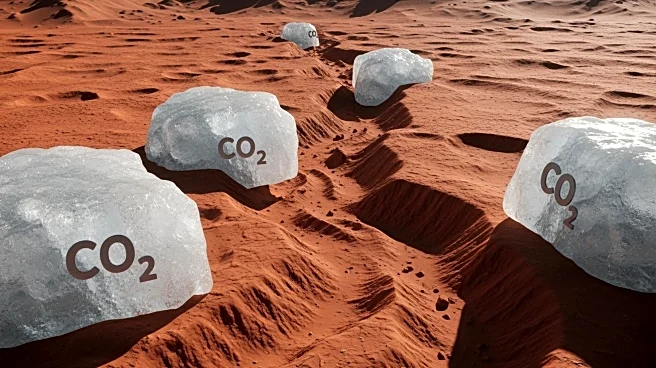What's Happening?
Researchers have been studying the mysterious gullies on Mars, which were initially thought to be formed by flowing water. However, recent studies suggest that these features may be carved by dry ice, or carbon dioxide ice, which sublimates directly from
solid to gas. This process occurs when the dry ice, formed during the Martian winter, warms up in the spring, causing it to slide down slopes and carve out gullies. Experiments conducted in a Mars simulation chamber have shown that blocks of dry ice can dig into sand and move downhill, propelled by the gas released during sublimation. This phenomenon, which does not occur naturally on Earth, provides new insights into Martian geology.
Why It's Important?
Understanding the formation of Martian gullies is crucial for interpreting the planet's geological history and assessing its potential for past life. The discovery that dry ice can create these features challenges previous assumptions about the presence of liquid water on Mars. This research not only enhances our knowledge of Martian surface processes but also offers a new perspective on planetary geology. By studying these unique processes, scientists can gain insights that may apply to Earth and other celestial bodies, potentially informing future exploration and the search for extraterrestrial life.
What's Next?
Further research is needed to explore the full extent of dry ice's role in shaping Martian landscapes. Scientists may conduct additional experiments under varying conditions to better understand the dynamics of dry ice sublimation and its geological impact. These findings could influence future Mars missions, guiding the selection of landing sites and exploration targets. As researchers continue to investigate, they may uncover more about the planet's climate history and its capacity to support life.
Beyond the Headlines
The study of Martian gullies highlights the importance of considering non-terrestrial processes when examining other planets. This research encourages scientists to think beyond Earth-centric models, potentially leading to breakthroughs in understanding planetary environments. The findings also underscore the need for interdisciplinary approaches, combining geology, atmospheric science, and planetary exploration to unravel the mysteries of Mars.
